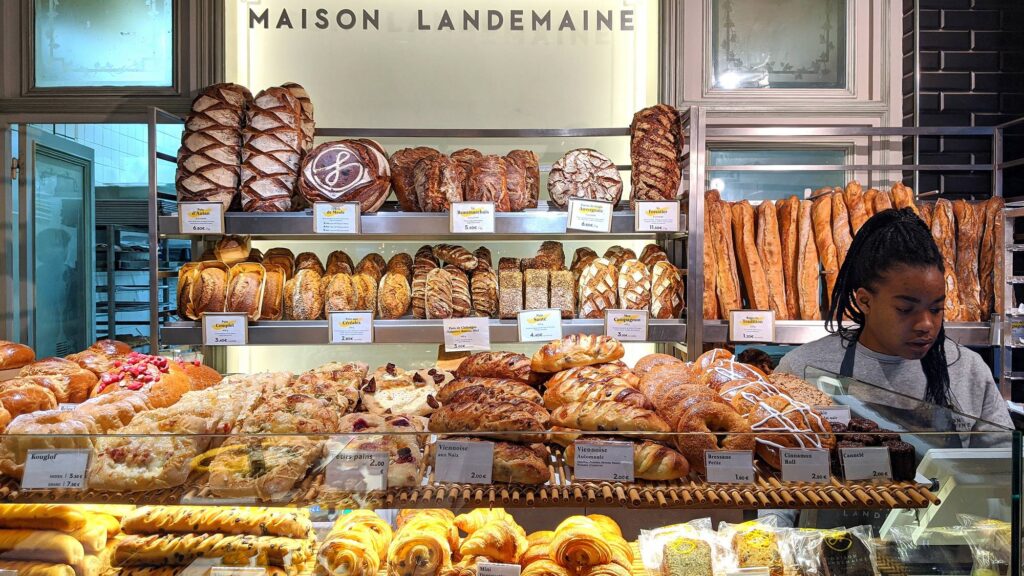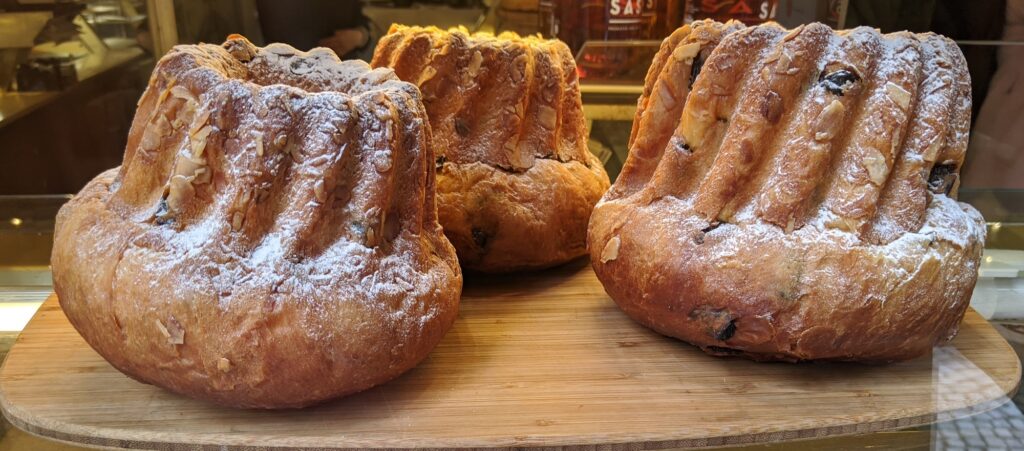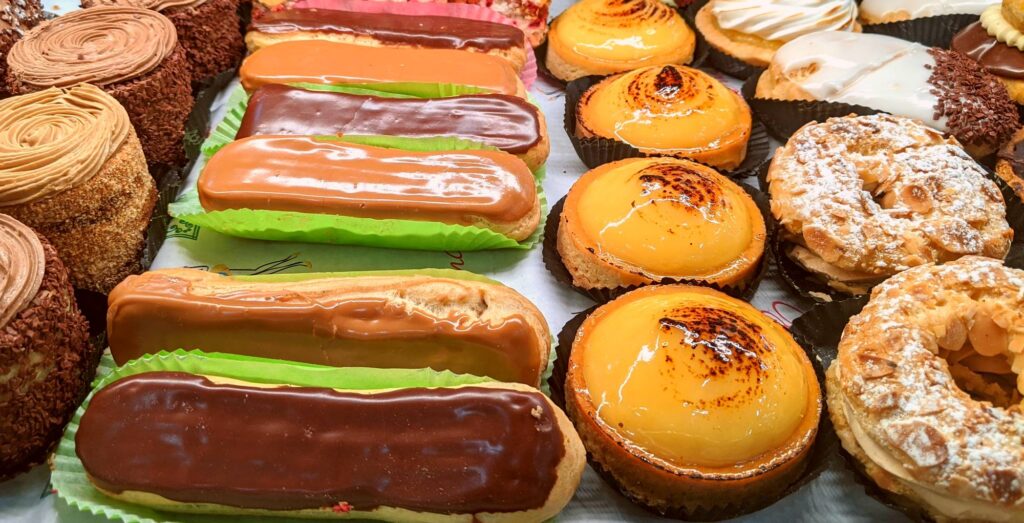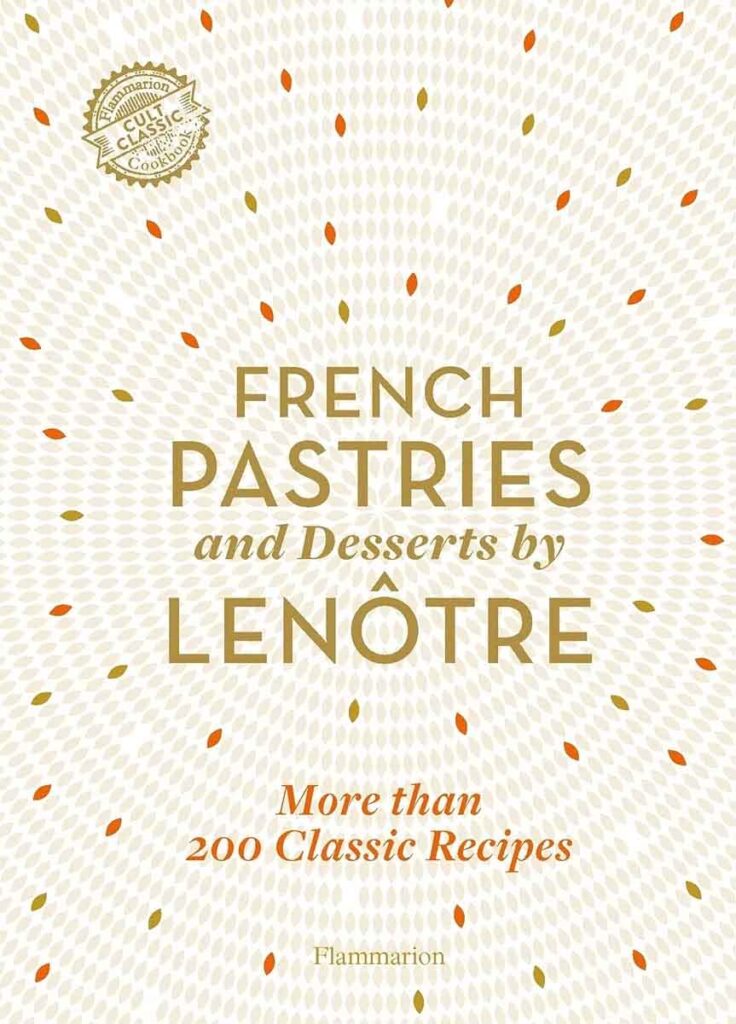
Two new cookbooks from Flammarion just might be the next best thing to being in Paris. We were last there in early February 2020. We cherish those last few days in the City of Light as the waning hours of our pre-pandemic innocence. Those poor Chinese people, we thought as we watched BBC’s reporting from Wuhan. Poor world, we think now.
There was no way we could fill our luggage with croissants, gateaux, baguettes, éclairs, and all the other delectables of French bread and pastry making. If only. Our photos remind us how ubiquitous great breads and pastries are in Paris. Getting chilled stalking the winter streets during the end of the Paris sales? The obvious solution is to pop into a cafe for a chocolat chaud and a croissant.
We are blessed with some excellent bakeries in our home town of Cambridge, Massachusetts. But it’s still not Paris, where every corner boasts a pastisserie or boulangerie and where mediocre bread or pastry is a crime against the people. But if we want those French treats badly enough, we now have the directions to make them ourselves.

UPPER CRUST: HOMEMADE BREAD THE FRENCH WAY
Like many people, we dug deeper into bread-making during the early months of the pandemic lockdown. The rediscovery of the no-knead country loaf baked in a piping-hot Dutch oven even threatened our waistlines—until tomato season arrived and we could use the bread sparingly to soak up the juices of sliced fresh tomatoes drizzled with olive oil. With apologies to the French, no butter was needed.

Upper Crust: Homemade Bread the French Way by Marie-Laure Fréchet (Flammarion, $36) actually includes a variant of that recipe, but that’s just the beginning of detailed directions to prepare more than 100 different breads from the French repertoire. This is a volume for a deep dive into the baker’s art. It can be intimidating if all you’re looking for is a quick version of pain de mie, or sandwich loaf. (Spoiler alert: There is no quick version of pain de mie.)
In fact, the first hundred or so pages are devoted to bread basics, including a lengthy discussion of yeast types and other forms of leavening along with the French legal requirements for pain au levain. The starter for levain breads is what Americans often call sourdough. A significant section of Upper Crust is devoted to the creation, care, and feeding or your own levain. In other words, don’t plan on making many of these breads without a headstart of three weeks or so.
We’re resigned to the process, if only because we dearly want to make the whole wheat and walnut country loaf we were eating for breakfast during that last Paris stay. Even the lowly (or heavenly, depending on your point of view) baguette calls for 50 grams of refreshed starter along with some fresh yeast. And you can’t make delectable kouign-amann without baguette dough….
The author has enlisted 18 bakers and pastry chefs to contribute some of the sweet and savory recipes, including regional specialties like fougasse. She also includes a chapter on breads from other cultures as they are interpreted in France. (French bagels are surprisingly good.) Excellent photographs illustrate key techniques. While the book can’t give you the earlobe texture touch for kneaded dough, it can show you how to properly form a loaf that comes out of the oven golden and perfect.

FRENCH PASTRIES AND DESSERTS BY LENÔTRE
The year 1957 was a watershed in French gastronomy. That’s when Gaston and Colette Lenôtre moved from Normandy to Paris and opened their first pâtisserie at 44 rue d’Auteuil, very close to the Bois de Boulogne in the 16th arrondisement. Gaston would go on to make French pastry lighter and more intensely flavored, revolutionizing an already advanced art. He is widely credited, for example, with creating the gâteau opéra (Opera cake). His classes trained generations of pâtissiers.

Flash forward two decades to the publication of Lenôtre’s cookbook in English in 1977, making the chef a familiar master in the U.S. and U.K. He passed away in 2009, but his culinary empire continues. The chefs of Lenôtre Paris have compiled this wonderful update of his classic pastry cookbook, French Pastries and Desserts by Lenôtre: 200 Classic Recipes Revised and Updated (Flammarion, $35).
The Lenôtre cooking school offers classes for professional and amateurs alike. The cooking school expertise shines through in this book, making it a delight to read and to use. The first chapter is devoted to ‶doughs, sponges, and meringues.″ In other words, the bases for most pastries and desserts. The second chapter is entirely about ‶creams, sauces, glazes, and decorations.″ That is, all the stuff that goes on top, inside, or between the bases. After that, the contents amount to a list of all things both French and sweet: baba au rhum, Black Forest gâteau, crêpes, croissants, éclairs, lemon meringue pie, mille-feuilles, molten chocolate cakes…. And, of course, Lenôtre’s master creation, the Opéra.
If you’re really going to delve into this delicious world, we have an unusual recommendation. Buy the hardcover book to put on the coffee table and dream about dessert. Then buy the online version so you can print out the two-page spreads for a countertop reference that you don’t mind smearing with butter and chocolate.
